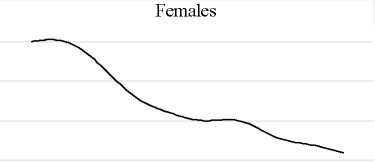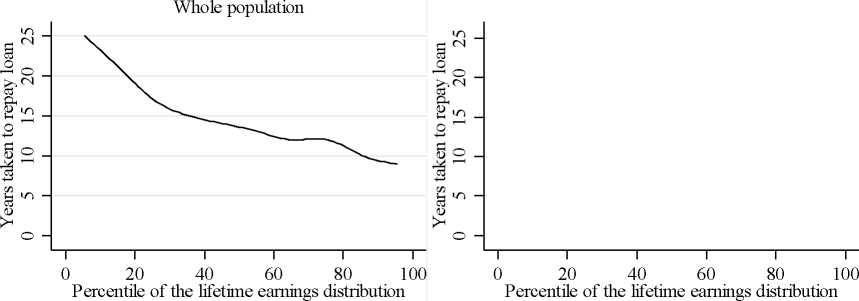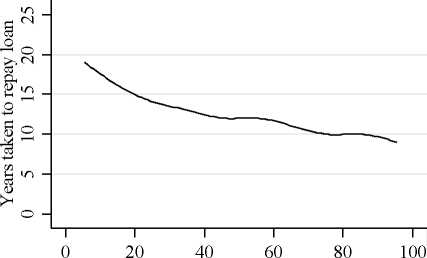

Males

Percentile of the lifetime earnings distribution
Taken together, the analysis in Figures 4a-4c, illustrates the potential benefits of the
new system in terms of the insurance it provides against low realised returns to
investments in HE. This is seen most clearly though the dependence of the level of
government subsidy on realised labour earnings later in life. Our results thus provide
empirical support for the use of income-contingent loans as a mechanism for
providing insurance in the face of uncertain and heterogeneous returns to human
capital investments.
b) How does the new system compare to the old system?
An interesting question our simulations can address is how these patterns of graduate
repayments and taxpayer subsidies compare to the previous HE funding system. In so
doing, it highlights the distributional effects of various key aspects of the reforms.
There are three important differences between the two systems that we will consider
here. First, the new system has more generous loan subsidies. Second, it has higher
levels of government debt on graduation. Third, the new system allows students to
obtain a better standard of living at university, due to the availability of grants and/or
18
More intriguing information
1. The name is absent2. Globalization, Divergence and Stagnation
3. Two-Part Tax Controls for Forest Density and Rotation Time
4. The name is absent
5. MULTIMODAL SEMIOTICS OF SPIRITUAL EXPERIENCES: REPRESENTING BELIEFS, METAPHORS, AND ACTIONS
6. Biologically inspired distributed machine cognition: a new formal approach to hyperparallel computation
7. The name is absent
8. Modeling industrial location decisions in U.S. counties
9. The name is absent
10. The name is absent